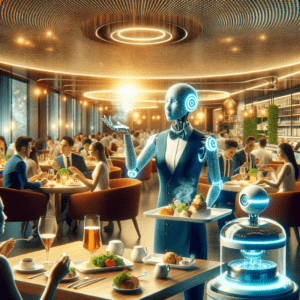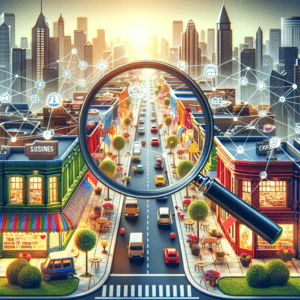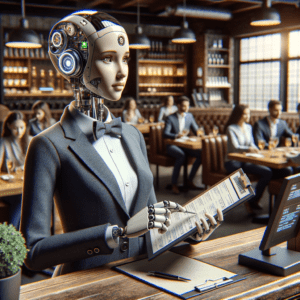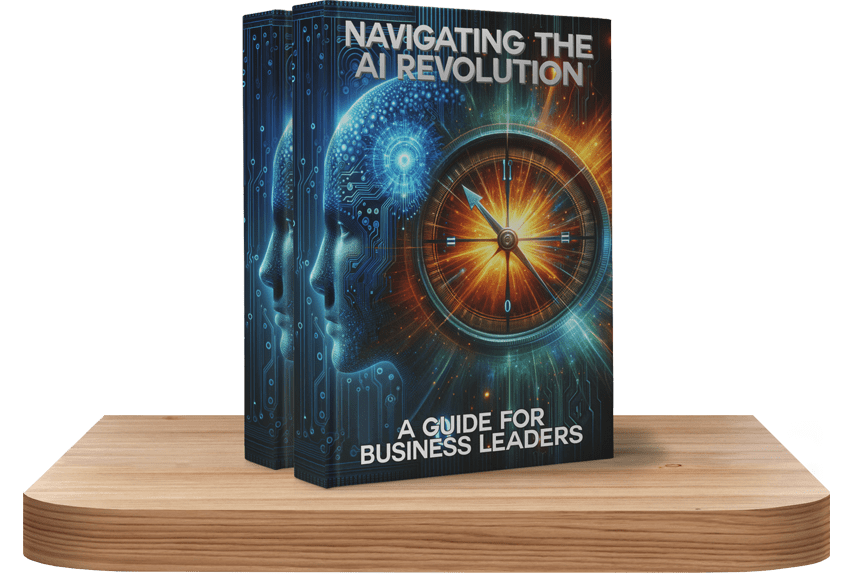The restaurant industry is transforming rapidly, with Artificial Intelligence (AI) at the center of this change. AI for restaurants is becoming a powerful tool, driving growth, improving customer experiences, and boosting operational efficiency. Tasks that once required time and resources, such as inventory management, customer profiling, and targeted marketing, can now be handled by AI in minutes.

AI for Restaurants
In recent years, AI has become more accessible for businesses of all sizes, bringing benefits previously limited to large corporations. Today, restaurants can easily implement AI-driven strategies to attract more customers, streamline processes, and enhance profitability. AI for restaurants is not just a trend; it’s becoming essential for any business looking to stay competitive.
This article explores the most impactful ways AI is reshaping the restaurant industry, from personalized customer interactions to optimized supply chains. By understanding these innovations, restaurant owners can adopt AI to stay ahead of the competition and meet the evolving demands of their customers.
AI-Enhanced Marketing and Customer Acquisition
For restaurants, attracting new customers is a constant challenge. AI for restaurants offers solutions to boost visibility, reach, and customer engagement. By automating targeted marketing and optimizing online presence, restaurants can stand out from the competition.
AI-Generated SEO Landing Pages
AI can create SEO-friendly landing pages tailored to popular menu items, improving search engine rankings. For example, an AI-driven platform can generate separate pages for dishes like tacos or churros, each optimized to capture local searches. This approach drives more traffic by appearing at the top of search results for specific menu items, making it easier for potential customers to find exactly what they want.
Location-Specific Landing Pages
AI enables restaurants to expand their reach beyond their immediate area. By creating location-specific pages for neighboring cities, AI helps attract customers who might not otherwise know about the restaurant. For instance, a restaurant in Miami could rank in searches for nearby cities like Miramar, helping it reach more customers.
Data-Enriched Customer Profiling
Knowing your ideal customer is essential in today’s competitive market. AI for restaurants can analyze demographics and customer preferences to craft more effective marketing messages. For example, AI tools can highlight trends among high-margin customer groups, such as families or young professionals, allowing targeted offers to boost conversion rates.
AI-Driven Customer Engagement and Personalization

AI for Restaurant Marketing
AI for restaurants enhances the customer experience by providing tailored interactions and streamlining communications. These personalized touches help build customer loyalty and drive repeat business.
Smart Email Blasts and Upselling
AI makes it easy to automate and personalize email campaigns. Instead of manually planning each email, restaurant owners can use AI tools to craft targeted messages based on customer preferences and order history. For example, an AI-driven email could offer a returning customer their favorite dish or an exclusive promotion. This personalized approach not only saves time but also boosts engagement, turning one-time visitors into loyal patrons.
Real-Time Upselling at Checkout
With AI, restaurants can maximize each order’s value by making relevant suggestions at checkout. An AI system can track popular pairings and automatically suggest appetizers or drinks that complement a main dish. For instance, if a customer orders a pasta dish, the AI might recommend a popular side or dessert. This AI-driven upselling, inspired by companies like Domino’s, helps increase average order sizes while enhancing the dining experience.
Enhanced Chatbots and Virtual Assistants
AI chatbots allow customers to interact with a restaurant at any time, improving service availability. These virtual assistants can answer common questions, provide menu recommendations, and even connect customers with a “virtual chef” for insights on seasonal dishes or dietary options. This AI-powered customer support ensures guests feel valued while reducing staff workload.
Operational Efficiency with AI-Driven Systems

AI for Restaurant Menus
AI for restaurants doesn’t just improve customer engagement; it also boosts operational efficiency. By automating essential tasks, AI helps restaurants save time, reduce costs, and maintain consistency.
Inventory and Supply Chain Optimization
With AI, restaurants can optimize inventory by predicting demand and managing stock levels. For example, AI tools can analyze sales patterns to anticipate busy periods and adjust orders accordingly. This minimizes waste and ensures key ingredients are always available, helping restaurants save on costs while meeting customer demand.
Automated Scheduling and Staffing
AI-driven systems make staff scheduling more efficient by forecasting peak hours and managing shifts. Rather than relying on guesswork, AI analyzes sales data to determine staffing needs, preventing over- or under-staffing. This approach optimizes labor costs and improves employee satisfaction by providing more predictable schedules.
AI for Smart Menu and Layout Configurations
AI for restaurants also analyzes menu items and restaurant layout to identify high-margin opportunities. For instance, AI can highlight profitable items and suggest ideal placement on the menu, maximizing sales. Additionally, AI can evaluate table and kitchen layouts to improve customer flow and reduce wait times.
Data Analytics for Menu and Pricing Optimization

AI for Restaurant SEO
AI for restaurants is transforming how menus are crafted and priced, making each decision data-driven and precise. With AI analytics, restaurants can better understand customer preferences, optimize pricing, and stay competitive.
Dynamic Pricing and Promotions
AI enables restaurants to adjust menu prices based on demand, season, or time of day. For instance, AI might suggest lower prices during slow periods or special promotions for high-demand times. This dynamic pricing helps boost revenue by maximizing profit potential for each item sold.
Menu Development Based on Popular Search Trends
AI for restaurants can analyze local search data to identify trending ingredients or dishes in specific areas. For example, if searches show a growing demand for vegan options, a restaurant could add popular vegan items to meet that need. By staying in tune with trends, restaurants can keep their menus relevant and appealing to customers.
Optimizing High-Margin Menu Items
AI tools can identify which menu items bring the highest profit and which items are underperforming. This insight helps restaurants adjust their menus, emphasizing high-margin items and refining or replacing low-performing options. For instance, placing popular, high-margin items in prominent positions on the menu can encourage more sales.
Health, Safety, and Contactless Technologies
AI for restaurants is reshaping health and safety standards, creating a safer dining experience for both staff and guests. From food safety monitoring to contactless options, AI brings significant advantages.
Food Safety Monitoring
AI-driven systems help maintain food safety by monitoring temperatures, hygiene practices, and freshness in real time. For example, AI sensors can alert staff if storage temperatures go out of range, ensuring compliance with safety standards. This proactive approach reduces the risk of spoilage and enhances food safety, protecting customers and reducing waste.
Contactless Ordering and Payments
AI-enabled contactless ordering and payment options make transactions safer and more efficient. Customers can order and pay via mobile apps or kiosks, minimizing contact with surfaces and staff. This feature not only streamlines service but also meets post-pandemic expectations for safer dining environments.
Automated Compliance Tracking
Keeping up with health regulations can be challenging, but AI for restaurants can simplify compliance. Automated systems track hygiene protocols, cleaning schedules, and other safety standards, ensuring consistent adherence. With AI handling compliance, restaurant staff can focus more on customer service and operations.
Challenges and Considerations for AI Adoption
 While AI for restaurants offers many advantages, adopting it requires careful planning and consideration. Restaurants must weigh the costs, data privacy concerns, and potential workforce impacts.
While AI for restaurants offers many advantages, adopting it requires careful planning and consideration. Restaurants must weigh the costs, data privacy concerns, and potential workforce impacts.
Initial Investment vs. ROI
AI can improve profitability, but it often requires upfront investment. Restaurants should assess their budget and projected returns to ensure AI aligns with long-term goals. Fortunately, many AI tools are becoming more affordable, and potential ROI often outweighs initial costs.
Data Privacy and Security
With personalized customer experiences, AI for restaurants relies heavily on data collection. Protecting this data is crucial to maintain customer trust and comply with privacy regulations. Restaurants should ensure that AI platforms adhere to data security standards, safeguarding sensitive information.
Impact on Workforce Roles
AI adoption can change traditional roles, especially for routine tasks. While AI reduces workload, it may also lead to job shifts or changes in staffing needs. To ease this transition, restaurants can offer retraining programs, preparing staff for new, tech-driven roles.
By addressing these challenges, restaurants can successfully integrate AI, unlocking its full potential for a competitive edge.
Unlock the Power of AI: Download Your Free eBook and Transform Your Business Today!






